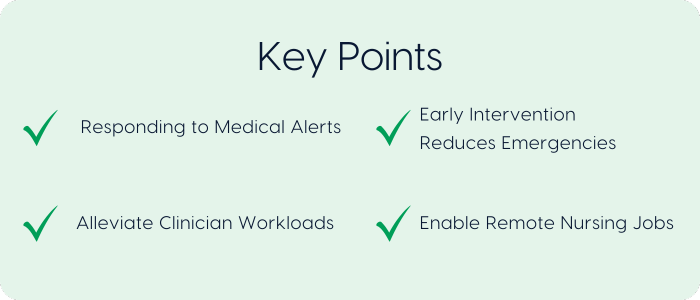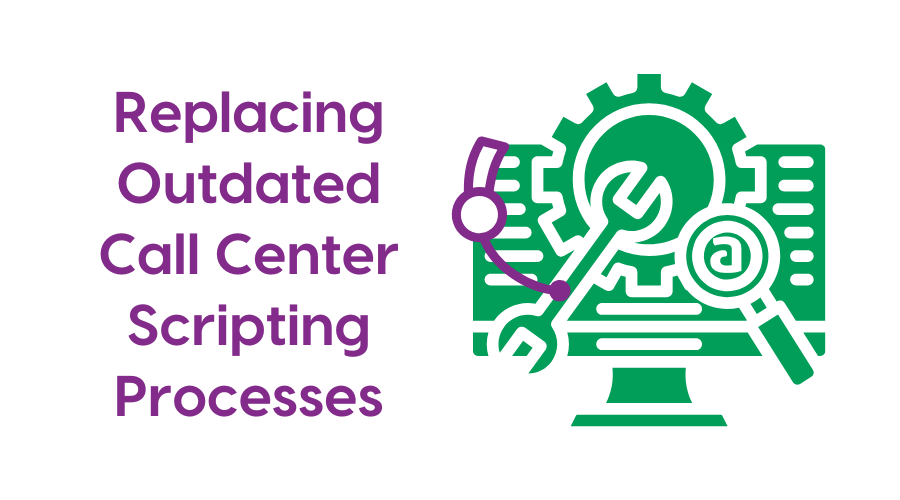Contact centers are one of the most efficient ways to manage remote patient monitoring (RPM), which is a growing need in today’s medical climate. RPM helps patients to be more engaged in their care, allows for greater continuity of care, and dramatically improves accessibility and accountability.
RPM helps patients adhere to their care plans by automating prescription reminders and engagement alerts. It reduces the number of trips patients must take to the clinic for basic checkups to measure blood pressure, oximetry, blood sugar, and more. RPM also helps manage intake and triage, keeping clinics from becoming overwhelmed by non-emergent needs. Additionally, the chronically ill, the elderly, and those with reduced mobility can use RPM devices to easily take and report their vital signs. The data received through RPM devices are more reliable and accurate than self-reported data and can be continuously monitored.

Responding to Medical Alerts and Early Intervention
Clinical contact centers help medical providers monitor and respond to the remote data that is collected. One way they do this is by distributing medical alerts to the doctors on-call. For example, if a patient at high risk of a cardiac event experiences an adverse change in vital signs, their wearable heart rate monitor sends an alert to the contact center. Depending on the nature of the alert, the nurse on-call could simply call the patient, contact the patient’s cardiologist, or dispatch paramedics to the patient’s location.
Remote patient monitoring that is tracked with the help of a contact center can also reduce hospital readmissions by recording the trajectory of the patient’s health. Healthcare professionals can intervene sooner. Not only can early intervention reduce emergencies and alerts, but it can also keep patients healthier for longer. Medical staff can also use the data to improve self-management by helping patients become more accountable to their care plans. The more involved and educated patients are about their health, the better their recovery.
Alleviate Clinician Workloads and Enable Remote Jobs
Another benefit of contact centers that are capable of monitoring patients remotely is that they help alleviate clinician workloads. The nurses at the contact center can simply view the data sent to them instead of contacting each patient individually to get that data. Nurses can then spend more time with the patients who need their expertise. When healthcare staff is freed from tedious data collecting, they work to the highest level of their degrees and experience more satisfaction. Automating data collection this way reduces burnout, which improves staff turnover rates.
Contact centers enable more nurses to work remotely. At a time when the country is experiencing nursing shortages, contact centers can bring more nurses and patients “together” even while they are staying physically apart. Secure, cloud-based call center solutions, like Amtelco’s contact center solutions, enables call center nurses, pharmacists, therapists, and other health care professionals to continue helping their patients remotely.

Improve Patient Experience
Healthcare professionals aren’t the only ones who benefit from this arrangement. When implemented correctly and with customized scripting, contact centers help improve the patient experience. Patients who call in can immediately connect with a health professional instead of waiting on hold. Hospitals that use a virtual lobby can use their call center software to seamlessly guide patients from their initial contact to logging on to a video conference with their provider.
The following are the most important factors to consider when choosing a contact center solution to help manage remote patient monitoring:
- HIPPA compliant, end-to-end encrypted, stable cloud or network. Healthcare systems are regularly the subject of network attacks, so it is crucial that your communications partner uses the highest security and encryption available.
- Interoperability. A key factor in a good UX is interoperability. Data should flow unrestricted among EHRs, wearable tech, SMS, telephone, email, emergency messaging, and medical alerts. Integration improves the accuracy of the data, reduces time spent on data entry, and increases time spent with patients.
- Robust, customizable reporting features. For a comprehensive audit trail, you need call recording, screen recording, call logging, data storage, and call center analytics.
- Custom scripting. Ensure that your contact center operators and nurses have custom information at the ready to provide a seamless, authentic experience for patients.
- Remote capability. Allow remote and work-from-home solutions in addition to an in-office contact center to increase your available staff, remain pandemic-proof, and improve practitioner satisfaction.
Contact centers are crucial partners in improving patient access to care. As remote patient monitoring becomes more common, contact centers must accurately and efficiently handle the data they receive. Your communications software should streamline the services you provide, including RPM. If you’d like to see a customized solution at work, contact us to learn more.





